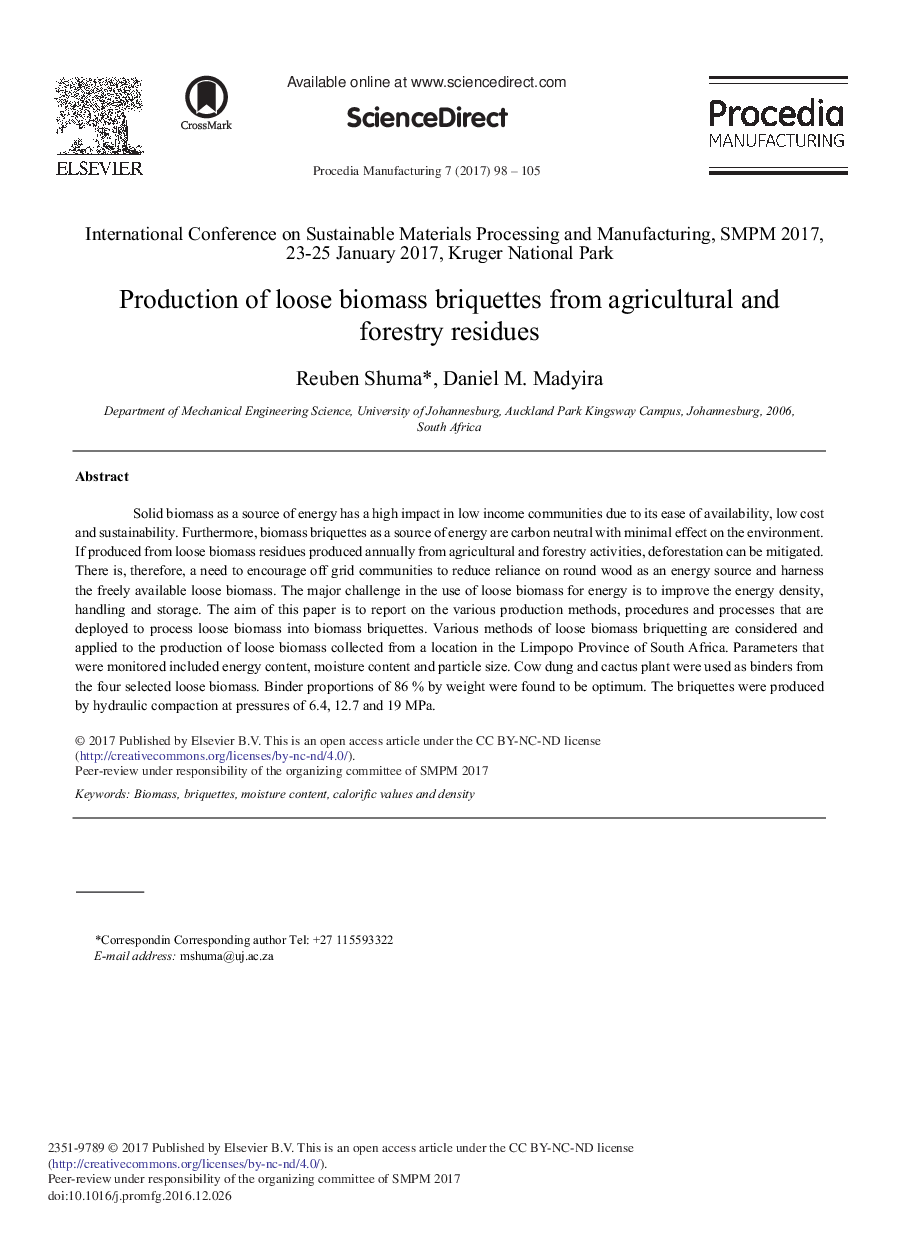| Article ID | Journal | Published Year | Pages | File Type |
|---|---|---|---|---|
| 5129143 | Procedia Manufacturing | 2017 | 8 Pages |
Solid biomass as a source of energy has a high impact in low income communities due to its ease of availability, low cost and sustainability. Furthermore, biomass briquettes as a source of energy are carbon neutral with minimal effect on the environment. If produced from loose biomass residues produced annually from agricultural and forestry activities, deforestation can be mitigated. There is, therefore, a need to encourage off grid communities to reduce reliance on round wood as an energy source and harness the freely available loose biomass. The major challenge in the use of loose biomass for energy is to improve the energy density, handling and storage. The aim of this paper is to report on the various production methods, procedures and processes that are deployed to process loose biomass into biomass briquettes. Various methods of loose biomass briquetting are considered and applied to the production of loose biomass collected from a location in the Limpopo Province of South Africa. Parameters that were monitored included energy content, moisture content and particle size. Cow dung and cactus plant were used as binders from the four selected loose biomass. Binder proportions of 86% by weight were found to be optimum. The briquettes were produced by hydraulic compaction at pressures of 6.4, 12.7 and 19MPa.
